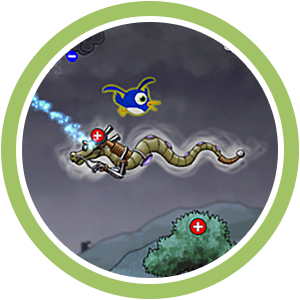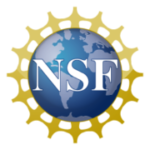
An embodied game where the left hand controls the storm cloud and the right hand controls the dragon. As the charged particles in the cloud separate, conditions become ripe for a lightning strike. See if you can position the dragon in the right place at the right time!
Interested in gaining access? Contact us for more information.
About Dragon Shockra
The goal of this game is to feed the hungry dragon lighting strikes. Other charged objects in the world can steal the strikes though, and watch out for the evil birds! Coulomb’s Law will help players understand the conditions before a lightning strike can occur so they can position the dragon correctly. Each level lasts for two minutes: Level 1 moves slowly with fewer birds; levels 2 and 3 each move faster with more evil birds. Remind students to note their scores after each game play.
NOTE: This version is an experiment run between congruent and incongruent gestures. Mode ‘A’ should be played for congruent gestures.
Experiment Hotkey Notes:
- Press Page Down to proceed to next Text card
- Press Ctrl+Down Arrow to skip to the next section
Learning Goals
Upon completion of this game, players will understand:
- Introduction of dynamic Coulomb’s Law as a relationship
- The bottom of the cloud is measured and its changing qnet is displayed
- This qnet alters with charge separation
- How their new knowledge of Coulomb’s Law will aid them in positioning the dragon for the maximum number of lightning strikes
- Lightning requires certain conditions of E-field magnitude and distance to be met
Teacher Guides and Sample Test
Peer-Reviewed Research
Johnson-Glenberg, M. C., & Megowan-Romanowicz, C. (2017). Embodied science and mixed reality: How gesture and motion capture affect physics education. Cognitive Research: Practices and Implications. 2, 24. 10.1186/s41235-017-0060-9.
System Requirements
Licensing Information
This game is free to share and adapt in compliance with the non-commercial creative commons license guidelines.
To request open source files, contact us for more information.
Disclaimer
This material is based upon work supported by the National Science Foundation under Grant No1020367. Any opinions, findings, and conclusions or recommendations expressed in this material are those of the author(s) and do not necessarily reflect the views of the National Science Foundation.

